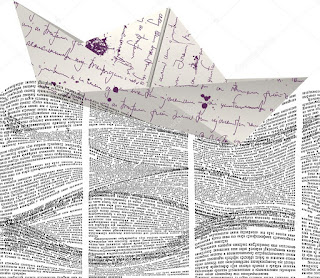I can name at least five acquaintances who, in the last six months, died of a sudden cardiac arrest (SCA). All of them were between 50 and 60. Since I am in my fifties, I consider that too young to die.
Last month, Dean Jones, 59, a well-known Australian
cricketer and commentator was staying at a south Bombay hotel. In fact, I had bumped
into him a couple of times on Marine Drive during my morning run. He returned
from his run, had breakfast, went to his room, and… gone.
*****
When the global lockdown began at the end of March,
hospitals were overwhelmed. Non-essential surgeries were postponed. Private
clinics were shut. People stayed at home with untreated ailments.
Cardiologists in Italy, France, New York and other
places were stunned at the fall in the number of patients. The Spanish society
of Cardiology published a paper showing a drop of 40%. That was only the calm
before the storm.
Hospital avoidance by terrified patients had driven
the numbers down. Many patients waited for months, and died without going to
the hospital. Those with chest pain were tested for Covid-19 rather than an ECG
examination.
Italian research showed 58% rise in the out-of-the-hospital
cardiac arrests (OHCAs) in February-March. Later months showed a 52% increase. In
Paris, the numbers doubled as compared to the average of the last eight years.
New York OHCAs were three times higher than usual.
Athletes were not spared either. (In Bombay, one ultra-runner
died in his sleep). A July research studied 100 athletes with Covid-19, and
found some signs of myocarditis in 60 of them, meaning they had inflammation in
the heart muscle, which can in rare cases lead to a sudden cardiac arrest. Some
sports organizations now require the players who test positive to undergo comprehensive
cardiac testing.
*****
God forbid, if you see someone collapsing, there is a
four-point procedure called the chain of survival. (a) Call the
ambulance (b) CPR (c) AED (d) professional care.
911 in North America, 112 in Europe, 999 in the UK and
102 in Bombay are expected to send the ambulance as fast as possible.
CardioPulmonary Resuscitation (CPR) is relatively
simple. Many YouTube videos show how. By placing both hands on the patient’s chest,
you push hard and fast, 100-120 chest compressions a minute. It requires energy.
If more than one person is available, they should take turns. (Mouth-to-mouth resuscitation
is reserved for children, not adults.)
The Automated External Defibrillator (AED)
supplies a dose of electric current to the heart to revive it. This device is designed
for lay people who can give first aid. Priced at around $1500, It is now
available at airports, hotels, and corporations.
Without CPR, the survival rate in sudden cardiac
arrest is 1%. With chest compression started quickly, the survival chance
improves to 10-20%. If AED is available and used, chances go up to 30-50%.
The fourth step is to hand over the patient to the professionals
in the ambulance.
*****
For a few years in Moscow, I had a Volvo, promoted as
the safest car by its makers. Once I saw a red light on my dashboard, but I didn’t
know what it meant. The car was running smoothly. For ten days, the light
wouldn’t go off, but the car was fine. On the eleventh day, in the middle of a
broad Moscow highway, it stopped and went dead.
*****
Sudden cardiac arrests are rarely sudden. European
society of Cardiology found that in normal times, more than 50% had visited a
doctor or a hospital in the two weeks before the arrest.
In a pandemic, you may postpone a visit to a dentist,
but don’t think of postponing heart matters. That can be more deadly than the coronavirus.
Ravi








